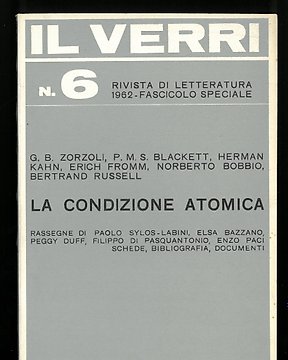
Luciano Anceschi diretta da - 17 numeri della Rivista di letteratura "Il Verri" diretta da Luciano Anceschi tra il 1962 e il 1971 - 1962-1971
N.º 83894469
![Yiddish; Scholem-Aleichem - Der Zeiger [L'HORLOGE] Illustre par M. Bahelfer - 1947](https://assets.catawiki.nl/assets/2024/5/9/8/3/0/830964e5-1fac-4fdf-96a7-8fb82bdc9c2e.jpg)
N.º 83894469
![Yiddish; Scholem-Aleichem - Der Zeiger [L'HORLOGE] Illustre par M. Bahelfer - 1947](https://assets.catawiki.nl/assets/2024/5/9/8/3/0/830964e5-1fac-4fdf-96a7-8fb82bdc9c2e.jpg)
Scarce edition with illustration by Jewish bauhaus artist Moshe Bahelfer [1908-1995]
Moshe Bagelferyches (Moses Bahelfer, Bagel) was born on 29 June 1908 in Wilno, Poland, then occupied by the Russian Empire and now Vilnius, the capital of Lithuania. After an apprenticeship as a painter and decorator in the vocational school, he studied graphic design for a term at the School of Arts and Crafts in Wilna. Bagelferyches became a member of a group of young artists, authors and Yiddish speaking poets known as ‘Jung-Wilna’ and contributed to their joint exhibitions.
In the winter term of 1928 he enrolled as student no. 305 at the Bauhaus Dessau; he was known from then on as Moses Bahelfer. After the preliminary course he completed an apprenticeship in the advertising and printing workshop and Joost Schmidt’s sculpture workshop. From 1929 he also attended Paul Klee and Wassily Kandinsky’s free painting classes. Throughout his apprenticeship he received half and full tuition fee exemptions worth between 45 and 75 Reichsmark. During his time at the Bauhaus he lived in lodgings in Dessau with his fellow student Isaak Butkow, who also came from Wilno; due to their lack of means, their hosts provided meals for both of them. Moses Bahelfer married Gitel Golde, who in summer 1930 had likewise enrolled at the Bauhaus. In January 1932 his work was exhibited at the Bauhaus. On 11 February 1932, having been awarded the Bauhaus Diploma No. 64 with distinction, Bahelfer left the Bauhaus and moved shortly thereafter to Paris with Gitel Golde.
In Paris, he was known as Moses Bagel and worked as a graphic designer and illustrator for the French literary journal ‘NRF’ (Nouvelle Revue Française) and illustrated children’s books. He also produced photo reportages for L’Agence VU. In 1939 Bagel volunteered for the French Foreign Legion. He spent the period of German occupation in Toulouse. He worked for an architect and joined a French resistance group, for whom he falsified identity documents. After the liberation of France he returned to Paris, illustrated books and worked for various Jewish newspapers. He designed stage sets and costumes for the Yiddish theatre in Paris. From 1947 to 1968 he was head of the advertising studio of 20th Century Fox Paris. He subsequently taught drawing classes at the École des Beaux-Arts in Paris from 1972 to 1973.
In 1959, to mark the 100th birthday of the Jewish humorist and satirist Shalom Aleichem, UNESCO commissioned Moses Bagel to produce a series of 15 large-scale works based on the oeuvre of the great Yiddish-speaking author. Following the exhibition in the UNESCO headquarters, Bagel donated the works to the Shalom Aleichem Foundation in Tel Aviv. Works by Bagel were exhibited in the travelling exhibition ‘50 Jahre Bauhaus’ held in 1968 by the Württembergischer Kunstverein Stuttgart, which subsequently moved on toLondon, Paris, Amsterdam, Chicago, Ontario, Toronto, Pasadena, Buenos Aires and Tokyo. Moses Bagel died in 1995 in Paris.
Cómo comprar en Catawiki
1. Descubre algo especial
2. Haz la puja más alta
3. Paga de manera segura